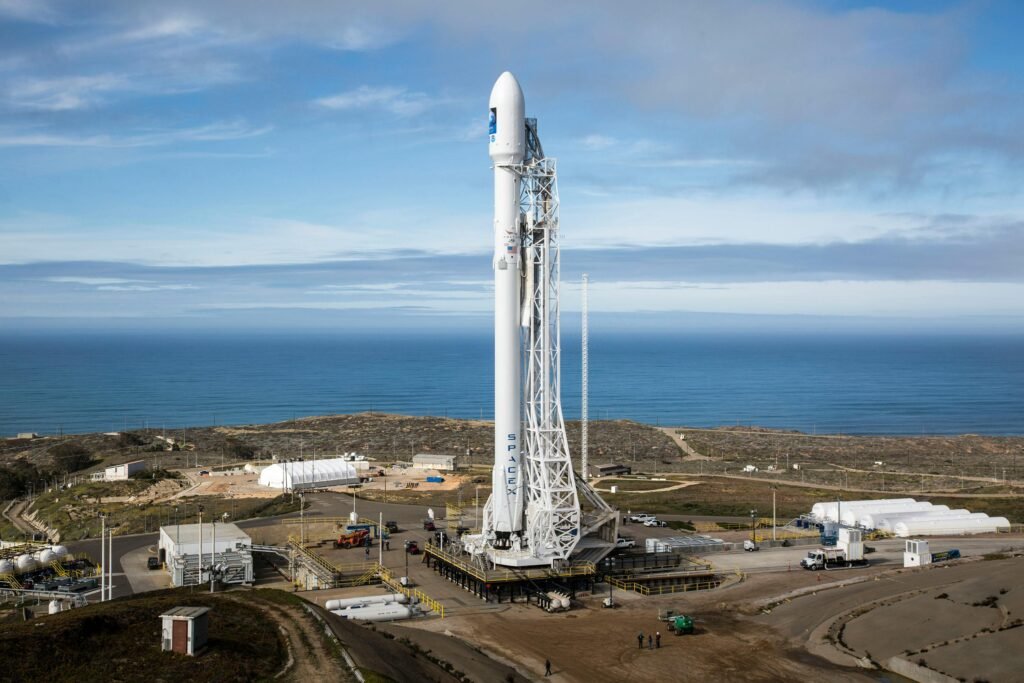
Space has always fascinated people. Stars, planets, and rockets are exciting to think about. But have you ever wondered, how do we send things to space? It may not sound easy, but with the help of science, planning, and powerful machines, it's possible.
This article explains the process of sending to space. You’ll learn how it works, why we do it, and how space tech is changing in places like the US and UK. If you’re curious about rockets or want to buy rocket kits, this guide is for you!
What Is Space Tech?

Space technology refers to the technology used to explore space. It includes rockets, satellites, space stations, and even the suits that astronauts wear. This technology is designed to survive in space and help people learn more about the universe.
Today, many companies are working hard to improve space technology. Across the US and UK, space tech companies and government agencies are working on faster, safer, and smarter ways to travel to space.
Why Do We Send things to Space?

There are many reasons for sending to space. Some of the most common ones are:
- Communication: Satellites help with the internet, mobile phones, and TV.
- Navigation: GPS systems guide us when we drive or fly.
- Weather Forecasting: Satellites monitor the weather and climate.
- Scientific Research: We study other planets, stars, and space events.
- Space Missions: We send astronauts and tools to space stations.
- Defense and Security: Countries use satellites to protect their borders.
So, when we ask how to send space, the answer involves both science and purpose. Every launch has a goal.
How Do We Send Things to Space?
Sending something to space is a step-by-step process. Here’s a simple breakdown of how something are sent to space:

1. Designing the Rocket
A rocket is a large, powerful machine that carries anything into space. It must be carefully designed. Engineers decide how much weight it will carry and how far it must go.
The part that is being sent into space is called the payload. It can be a satellite, a camera, tools, or even astronauts. These are packed carefully inside the rocket.
2. Building the Rocket
Rockets are made with strong but light materials. They are built to handle high speed, heat, and pressure. Once built, the rocket is tested many times to make sure it's safe.
3. Fuel and Power
To break free from Earth’s gravity, rockets need a lot of power. They use special fuel that burns very fast and produces huge amounts of energy. This helps push the rocket upward.
4. Launch
When everything is ready, the rocket is placed on a launch pad. The countdown begins. When it reaches zero, the engines start, and the rocket rises into the sky.
This is one of the most exciting steps in space transport. You can follow space transport news to watch live launches from places like NASA or SpaceX.
5. Entering Space
As the rocket goes higher, some parts fall off. These parts are no longer needed. The rest of the rocket continues to climb. In a few minutes, it reaches space.
What Happens After It Reaches Space?
Once the rocket reaches space, the payload is released. If it’s a satellite, it starts to orbit the Earth. If it’s a supply package, it may go to the International Space Station.
Modern rockets are very smart. Some, like the ones from SpaceX, can even come back to Earth safely. This is a big achievement in space tech, as it helps save money and reduce waste.
Who Sends somethings to Space?
Many organizations are involved in sending to space:
- NASA (USA)
- ESA (European countries)
- SpaceX (private company in the US)
- UK Space Agency
- ISRO (India)
- Other private companies
SpaceX has made space travel more affordable. Their rockets, like Falcon 9, are reusable and powerful. Many people in the US and UK space tech industries admire their work.
You can easily follow space transport news on websites or YouTube channels to see what these companies are doing next.
Can You Try This at Home?
Of course, you can’t launch a real rocket from your backyard—but you can buy rocket kits to learn how rockets work. These kits are safe and fun. They teach kids and students the basics of rocket science.
Learning about how we send something to space can inspire young minds to study science and one day work in the space tech field.
What’s the Future of Space Travel?
The future looks bright. Here are a few things we might see soon:
- Human missions to Mars
- Space hotels for tourists
- Faster rockets
- More reusable rockets
- Robots exploring deep space
All of this will be possible with modern space technology and companies like SpaceX. The US and UK space tech industries are expected to grow, offering jobs and exciting discoveries.
Conclusion
Now you know how we send anything to space. It requires careful planning, advanced rockets, high-powered fuel, and cutting-edge space tech. From building a rocket to releasing a satellite, each step is important.
Whether you just want to learn or are ready to buy rocket kits, space is open for everyone to explore. Keep learning, follow space transport news, and maybe one day, you’ll help send something into space too.







